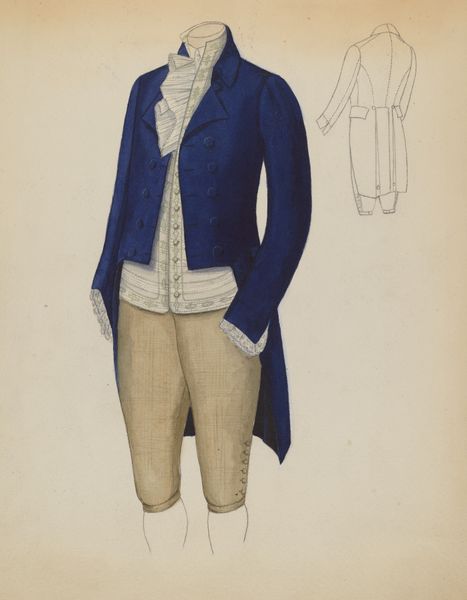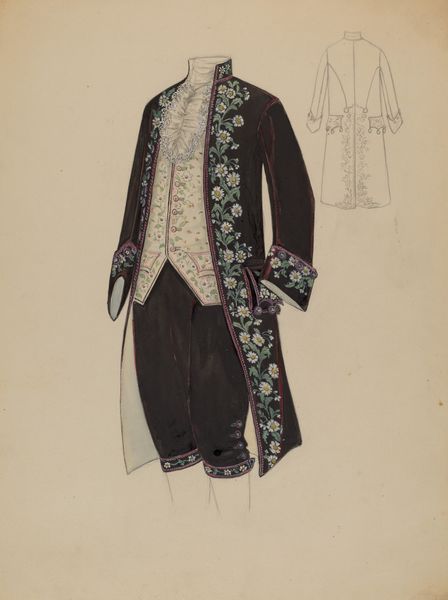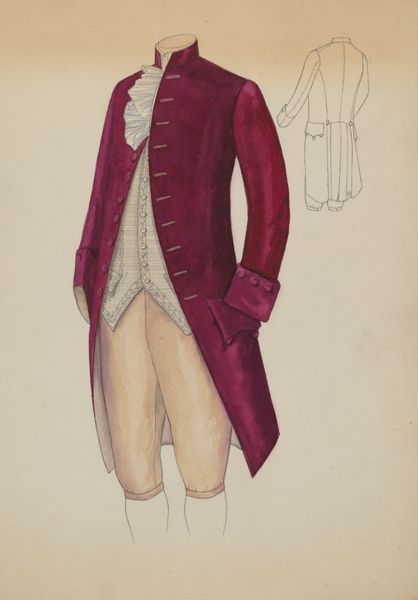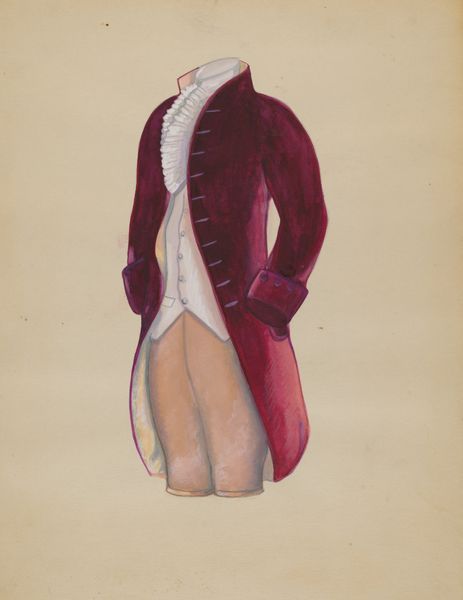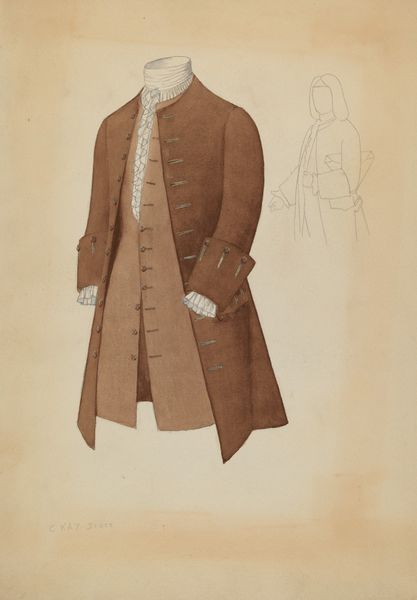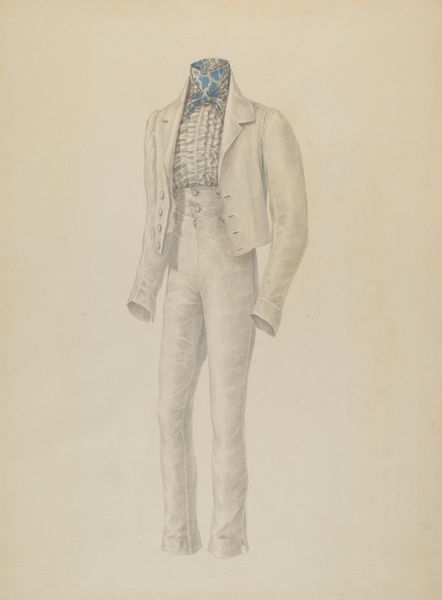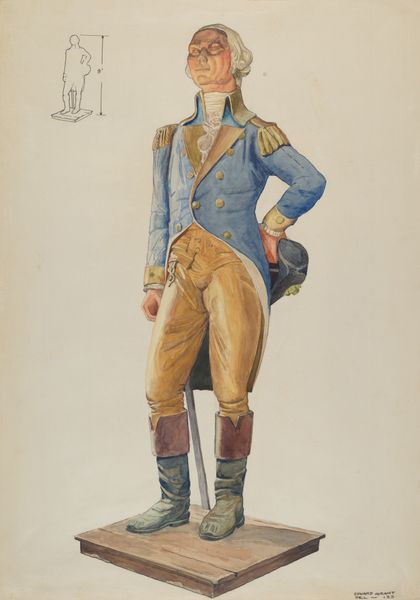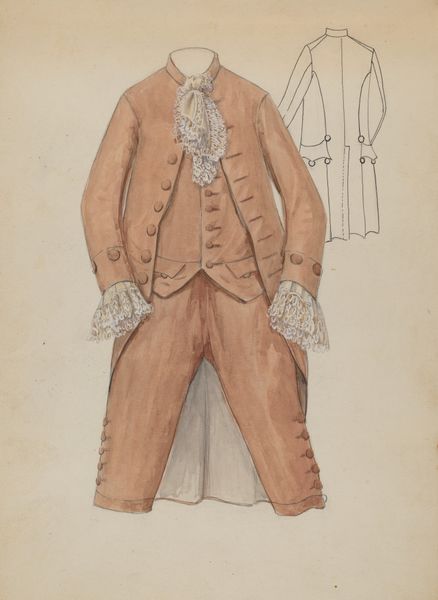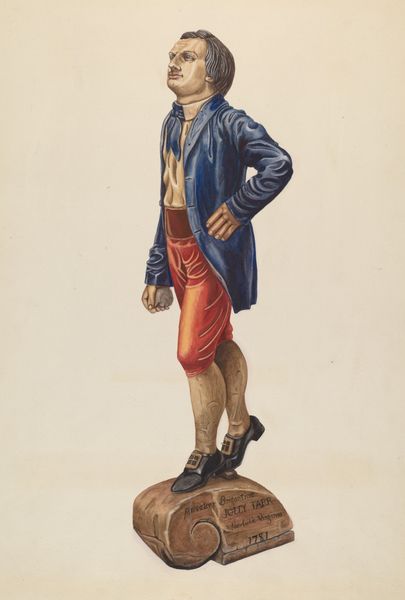
drawing, watercolor
#
drawing
#
watercolor
#
graphite
Dimensions: overall: 53.1 x 38.4 cm (20 7/8 x 15 1/8 in.)
Copyright: National Gallery of Art: CC0 1.0
Curator: What a peculiar, incomplete portrait. It's titled "Boy's Suit" and dates to around 1937. The artist, Gwyneth King, used watercolor and drawing techniques here, including graphite underdrawing if I'm not mistaken. Editor: There's an unsettling emptiness, almost theatrical in the absent face and hands. It really spotlights the intricate details of the attire. The blue is arresting and very skillfully rendered. Curator: Indeed. King painted it in an era fascinated by historical recreations. You know, the mid-20th century saw a surge in costume dramas and a romanticized view of the past, particularly the 18th century with its aristocratic styles. I imagine the work acting almost like a costume rendering, divorced from the body meant to inhabit it. Editor: I’d say the light in the painting is playing with this too; there's almost a separate illumination for each element. It lends an unnaturalistic, yet intriguing depth to the suit itself, drawing attention to the lines of each individual piece as separate aesthetic choices. It brings this drawing from mere depiction towards pure form. Curator: It's tempting to wonder what function this suit served and what role that might tell us of boys fashion and expectations of them in the early 20th century. Was this used for reference for theatrical performances, living history displays, or, on a darker note, some family remembrance after a loss? Editor: Loss definitely sits beneath this surface; the blank, white space speaks loudly, acting almost like negative space that overwhelms this ornate composition, like some kind of haunting memorial. Curator: Well, whatever prompted the creation of this striking rendering, King compels us to reflect not only on material culture and sartorial expression, but also on the many social stories clothing holds. Editor: Agreed. The formal choices spotlight so effectively, giving viewers space to reflect on what the depicted forms stand for, which can be interpreted differently depending on personal tastes. There's real formal elegance here, even with so much omitted.
Comments
No comments
Be the first to comment and join the conversation on the ultimate creative platform.
